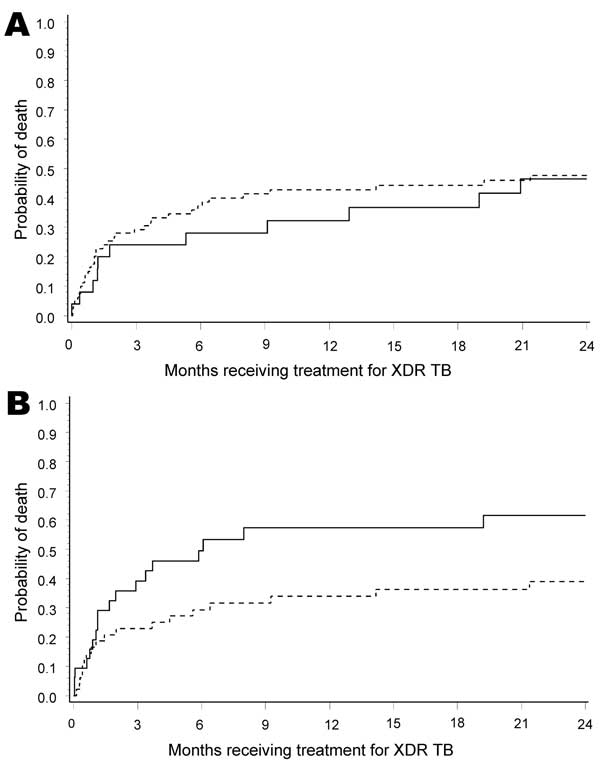Volume 19, Number 3—March 2013
Research
Treatment Outcomes for Extensively Drug-Resistant Tuberculosis and HIV Co-infection
Figure 1

Figure 1. . Kaplan-Meier curves for A) 114 HIV-positive (dashed line) and HIV-negative (solid line) patients receiving treatment for extensively drug-resistant tuberculosis (XDR TB) (p = 0.4966); and B) 82 HIV-infected patients with XDR TB receiving (dashed line) and not receiving (solid line) antiretroviral therapy (p = 0.0330), KwaZulu-Natal Province, South Africa. p values were adjusted for sex, TB treatment history, and HIV status.
Page created: March 21, 2013
Page updated: March 21, 2013
Page reviewed: March 21, 2013
The conclusions, findings, and opinions expressed by authors contributing to this journal do not necessarily reflect the official position of the U.S. Department of Health and Human Services, the Public Health Service, the Centers for Disease Control and Prevention, or the authors' affiliated institutions. Use of trade names is for identification only and does not imply endorsement by any of the groups named above.